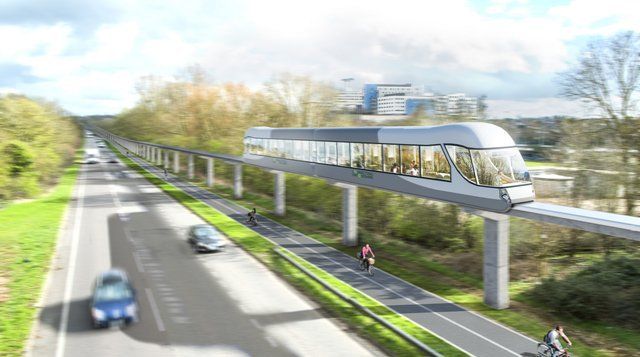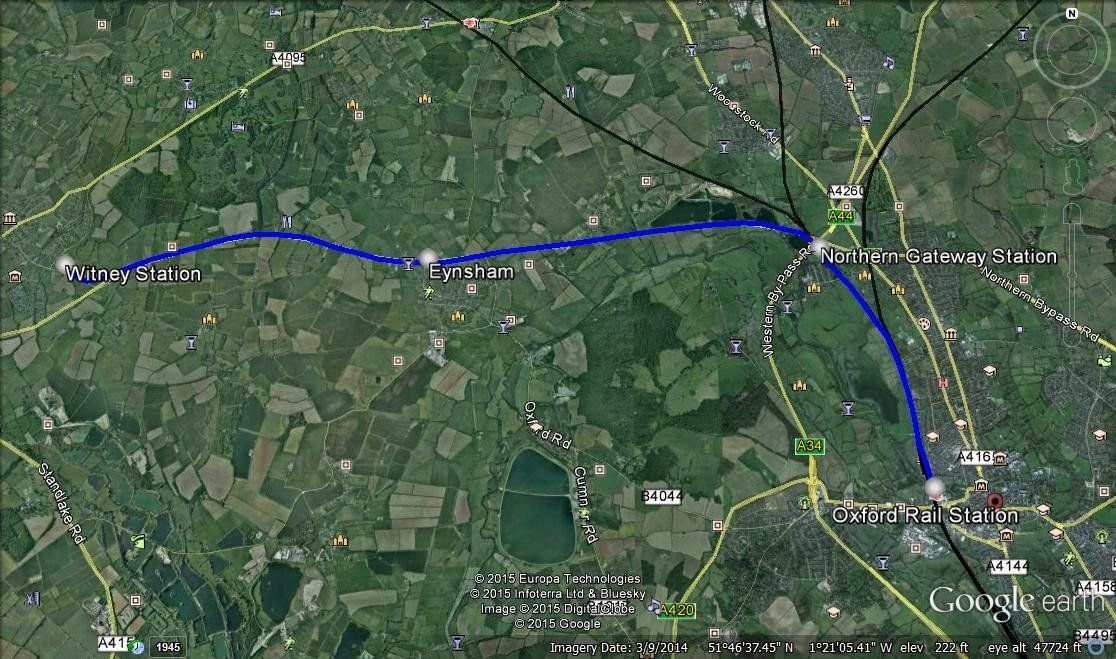
ABOUT
WestOx Monorail
A campaign by individuals who live in the Witney area and have a shared vision of a Witney to Oxford Rapid Transit System (RTS) in the form of a monorail along the A40 corridor.
The A40
The A40 is an important east - west route that passes through West Oxfordshire. As well as being a busy transport route through the county it serves as a link for daily commuters into the large areas of employment in and around Oxford. At peak times the A40 suffers from severe congestion in both directions. It is acknowledged that this is a major factor in restricting the economic development of both West Oxfordshire and Oxford itself. Most people recognise that this problem needs to be addressed to enable the continued prosperity of both the city and the growing towns to the west including Witney and Carterton.
Connecting Oxfordshire
In July 2014 Oxfordshire County Council (OCC) leader, Ian Hudspeth, held a number of road-shows to introduce the ‘Connecting Oxfordshire’ initiative. The meetings were held to present and encourage discussions of OCC’s forward planning strategy with regard to the various challenges that face Oxfordshire’s transport infrastructure. It was also an opportunity for members of the public to express their opinions on the subject. OCC literature in support of this initiative clearly identified the possibility of utilising monorail as part of this strategy by using the illustration below.
(reproduced with permission from Oxfordshire County Council/Blink Images)
Why Not Monorail?
Clearly there are a number of transport options that could be considered, indeed there is support for light rail/tram, ‘dualling’ the carriageway and even the concept of re-instating the heavy rail link between Witney and Oxford. At WestOx we fundamentally believe that monorail has real advantages over these alternatives. In this situation where space exists along most of the A40 margin where right of way is not an issue (avoiding lengthy acquisition/litigation issues) the cost of providing the guide-way beam would be far cheaper than constructing ‘at grade’ rail or widening the carriageway for dedicated bus lanes or more cars. Existing road junctions would be easily negotiated without the need for signal control of vehicles. Existing structures such as bridges and viaducts also pose little problem from an engineering point of view.
Safety of monorail systems is unrivalled by other forms of transport, virtually impossible to de-rail and separated from other road users. There have been zero passenger fatalities in all the years monorails have been in operation.
A well-designed system, operating at speeds up to 80kmph (50mph) could transport passengers from Witney to central Oxford in around 20 minutes. A twin guide-way allowing bi-directional operation of two vehicles would allow for three departures every hour. Automatic and driverless operation could significantly reduce operating costs. It is perfectly conceivable that with sufficient passenger numbers a system could operate profitably and would therefore require no subsidies.
Around the world monorail continues to be adopted as an important part of integrated transport networks. It is proven that well-designed systems that are the right choice for the situation can acheive high ridership figures and can also return profits to operators.
The best example of this is perhaps in Japan where monorails have been in use for many years. The Tokyo-Haneda monorail was opened in 1964 and has made a profit in every year since. Predicting a requirement for smaller systems, the Japanese monorail industry have developed 'SMARTRAN', a compact monorail ideally suited to applications such as the A40 corridor.
The best example of this is perhaps in Japan where monorails have been in use for many years. The Tokyo-Haneda monorail was opened in 1964 and has made a profit in every year since. Predicting a requirement for smaller systems, the Japanese monorail industry have developed 'SMARTRAN', a compact monorail ideally suited to applications such as the A40 corridor.
New Monorails around the World
In Italy, the Intamin monorail system from the airport to Bologna city centre has been completed and is due to begin operating later this year (2019).
A joint venture between Bombardier and China's CRRC is currently constructing two monorail lines in Wuhu, China.
In Bangkok, two new monorail lines are under construction and are set to be put into operation in late 2021 or early 2022.
Monorail systems are also planned for the Phillipines, Panama and Cairo.
Terminal Locations
Witney
In our opinion, Oxford Hill would be a suitable location to site a Witney 'Parkway' station. A station sited here would be within 10 minutes walking distance of Witney town centre via Cogges and Langel Common. It would also be within walking distance of the large housing estates of east Witney (Cogges and Madley Park). Additionally, the station would be easily accessed by commuters from the estates on the west side of the town (Thorney Leys, Deer Park and Downs Road) and the growing town of Carterton once the Shores Green junction has been completed.
Eynsham
A new 'Garden Village' is planned on the northern side of the A40 at Eynsham. This extensive development will consist of up to 2,200 new homes. A station sited on land to the north of the A40 nearby would be ideally located to serve the existing population and the proposed new housing development. A footbridge over the A40 carriageway would allow safe access for existing residents.
Northern Gateway
Plans exist for a large area of land for mixed business and residential development in the region of north Oxford between Pear Tree and Wolvercote roundabouts, known as the Northern Gateway. This is sure to provide job opportunities for many from west Oxfordshire and will increase commuter traffic in the area. A monorail terminal close by would help lessen the impact of the development on A40 traffic and could contribute to the success of businesses within this development.
Central Oxford
The proposed route would leave the A40 alignment near the 'Duke's Cut' bridge and follow closely the path of the Cotswold, Cherwell and Chiltern rail lines into (or adjacent to) Oxford rail station. Re-development of the station is planned and accommodation of a platform for terminating a Witney to Oxford RTS could easily be added to the design. (We gratefully acknowledge the contribution of Roger Curry to this proposal)
Proposed Route Alignment
Beyond Witney
The town of Carterton, like Witney, is growing ever larger with many new homes planned in the future. The creation of job opportunities in Carterton will not match the increase in population, the result of which will be an inevitable increase in A40 traffic as people need to find employment closer to Oxford. A Witney to Oxford rapid transit system will certainly be used by Carterton residents. Initially, with adequate parking at the Witney terminal, Carterton residents would access the system via the A40 Witney bypass using the Shores Green junction.
In the future we see no reason why the system could not be extended westward to Carterton. The guide way could be extended from the Witney terminal along the median of the A40 Witney bypass until it reaches the B4477, which could be followed to the outskirts of the town.

